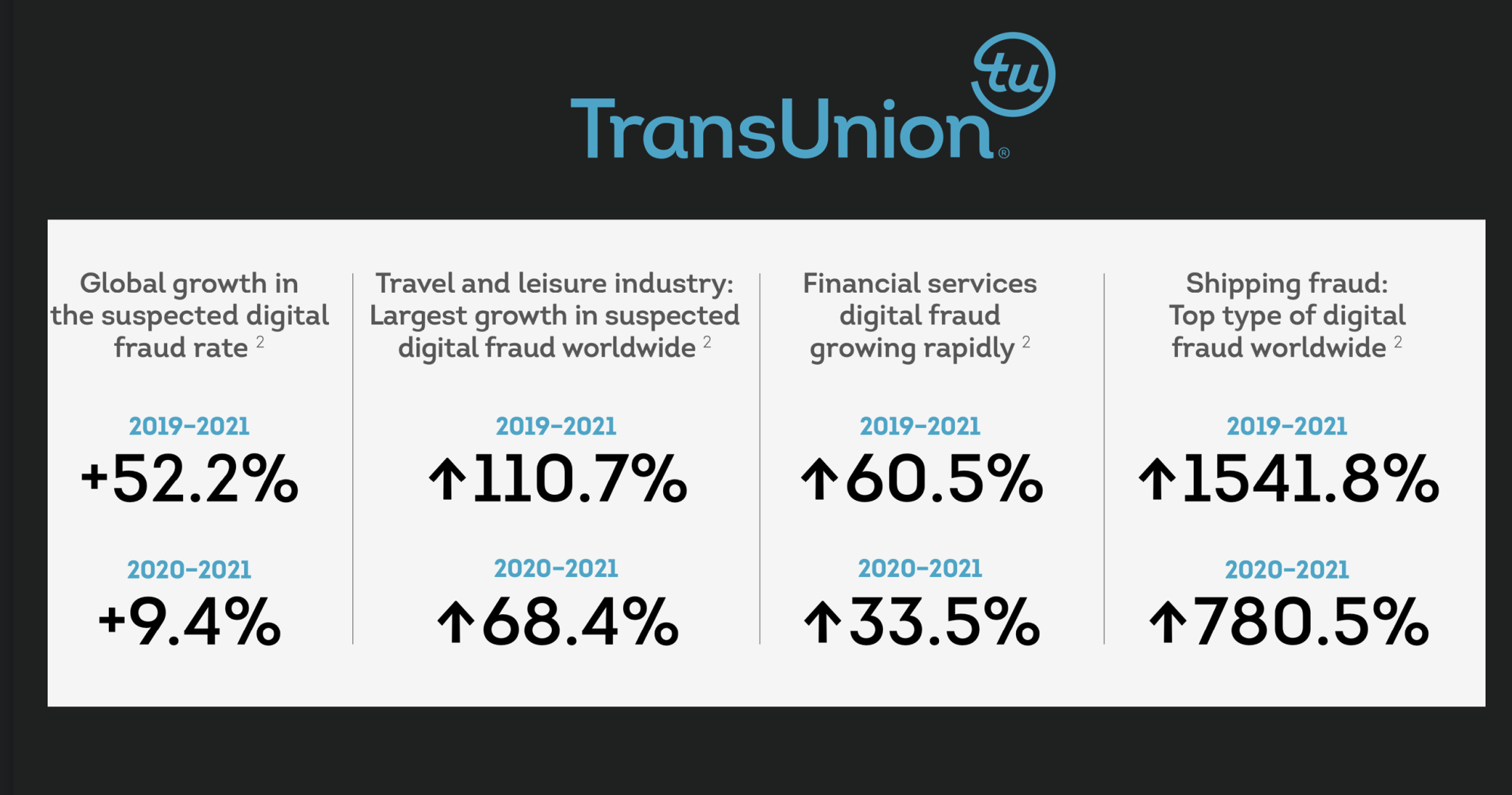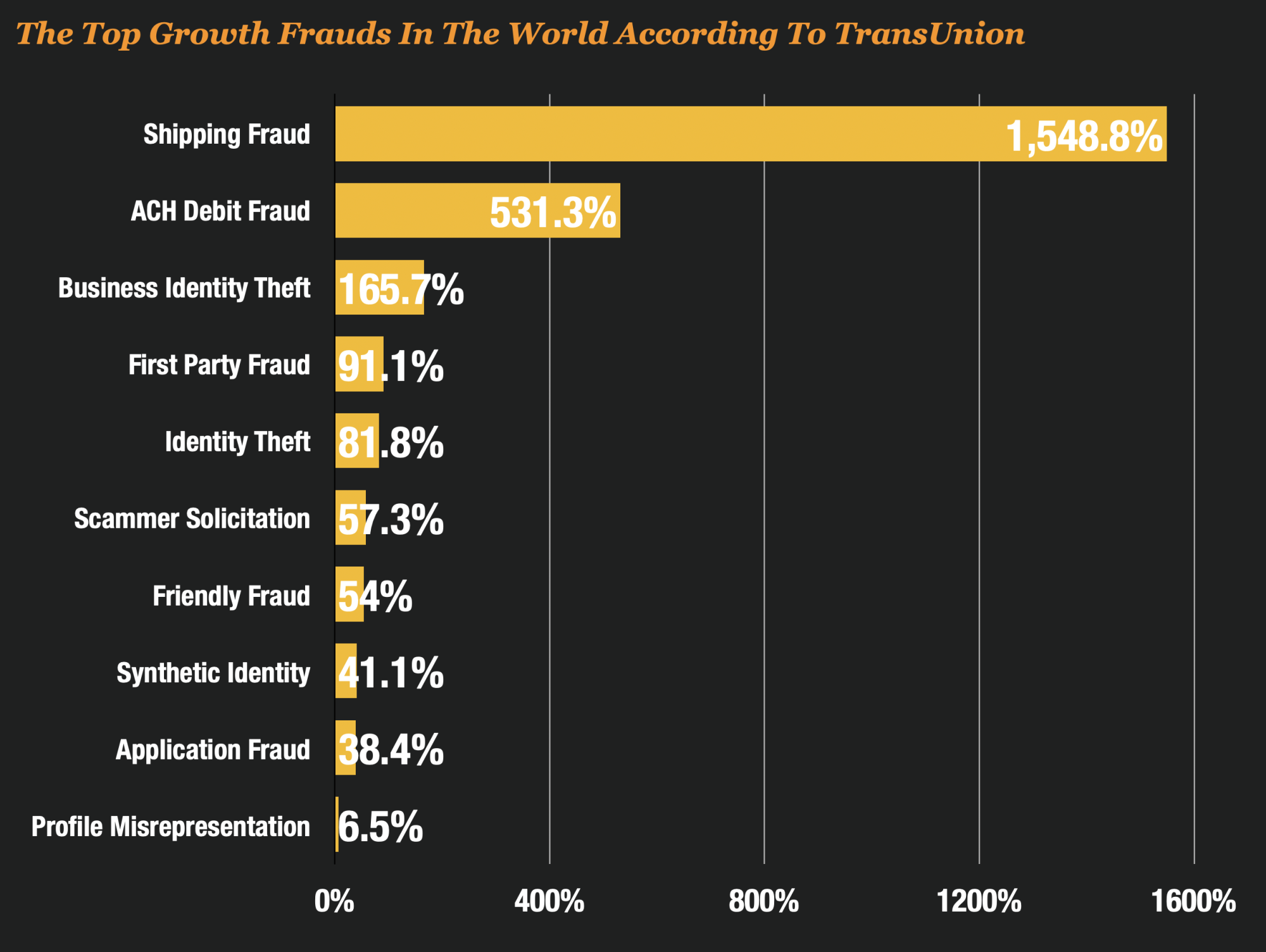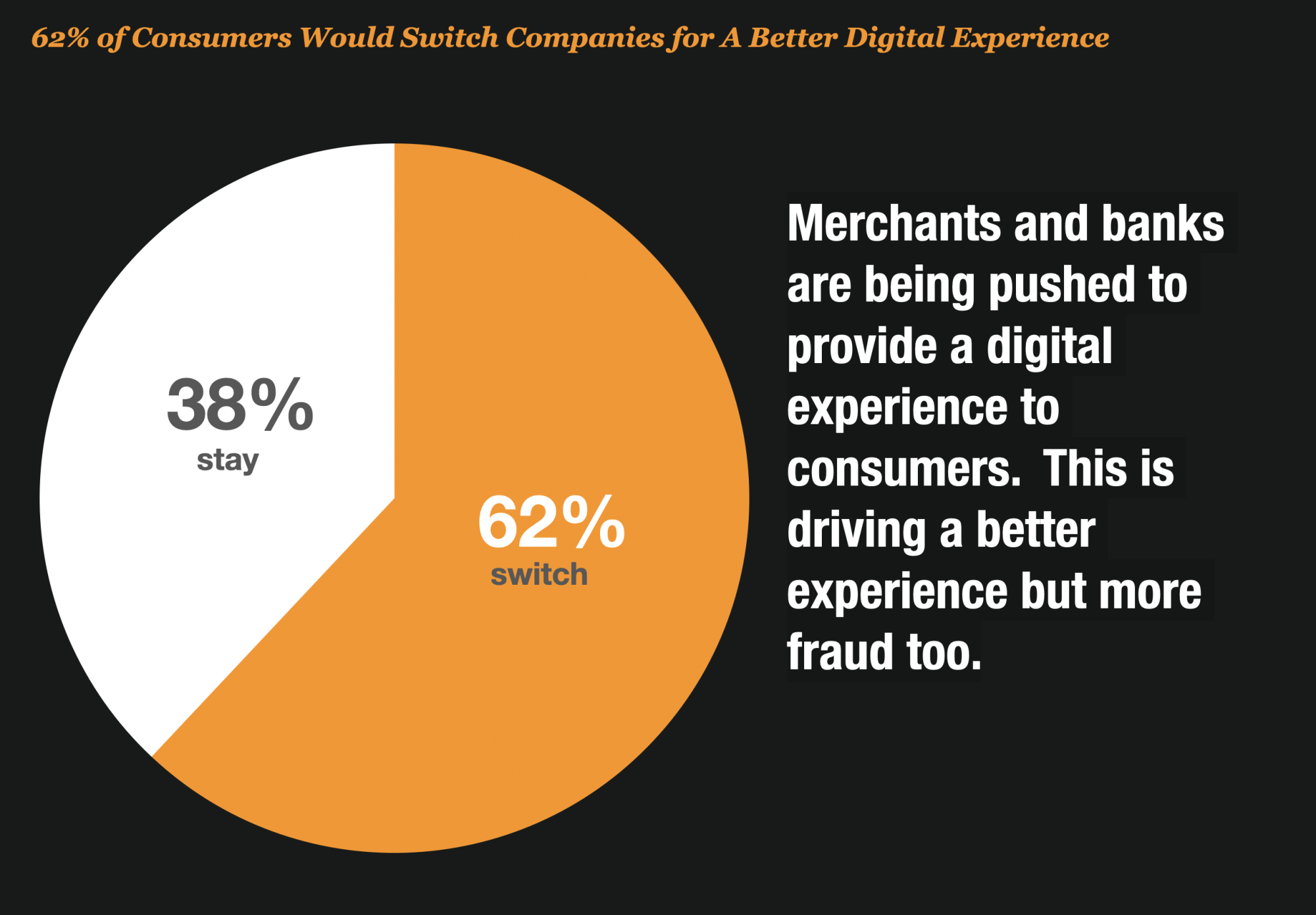TransUnion has released their latest global report on annual digital fraud trends and by all accounts fraud is way up. The report which you can download here – TransUnion’s 2022 Global Digital Fraud Trends report, indicates that shipping fraud is the fastest growing fraud type globally.
Shipping fraud was up 800% in 2021, and a whopping 1,500% in the last two year. That fraud is being driven by higher rates of ecommerce globally but also by rash of new fraud schemes in the market.

TransUnion reported that suspected digital fraud increased 52.2% between 2019 and 2021 — with travel and leisure, financial services and gaming suffering the largest increases.
Here Are The Top Frauds According to TransUnion
The fastest growing frauds in the world might surprise you. For all of the news reports and focus on identity theft, it did not rank as one of the top 3 categories of fast growing fraud according to TransUnion.
The list of fastest growing fraud types in the last 2 years included:
- Shipping Fraud – up over 1,500%
- ACH Debit Fraud – up over 531%
- Business Identity Theft – up over 165%
- First Party Fraud – up 92%
- Identity Theft – up 81.8%
- Scammer Solicitation – up 57.3%
- Friendly Fraud – up 54%
- Synthetic Identity – up 41.1%
- Application Fraud – up 38.4%
- Profile Misrepresentation – up 6.5%

According to TU, the growth in suspected instances of shipping fraud between 2019 and 2021 again illustrates how fraud follows changes in consumer behaviour. In this case, lockdowns and remote working increased online transactions for consumer goods which fueled demand for shipping and delivery services. These activities presented opportunities for criminals to commit different types of shipping fraud.
The Demand For A Digital Experience Will Keep Fraud Rates Increasing for Awhile
While fraud is certainly up, it is up because consumers are demanding a digital experience rather than shopping in stores.
According to TU, Globally, almost two in three (62%) consumers said they’re likely to switch companies for a better digital experience. Gen Z and Millennials were universally more likely to switch than older generations, while in India, an overwhelming 93% of respondents were likely to do so — by far the highest percentage among markets surveyed. To meet rising consumer expectations, businesses need to focus on offering easy, secure, mobile-first experiences




